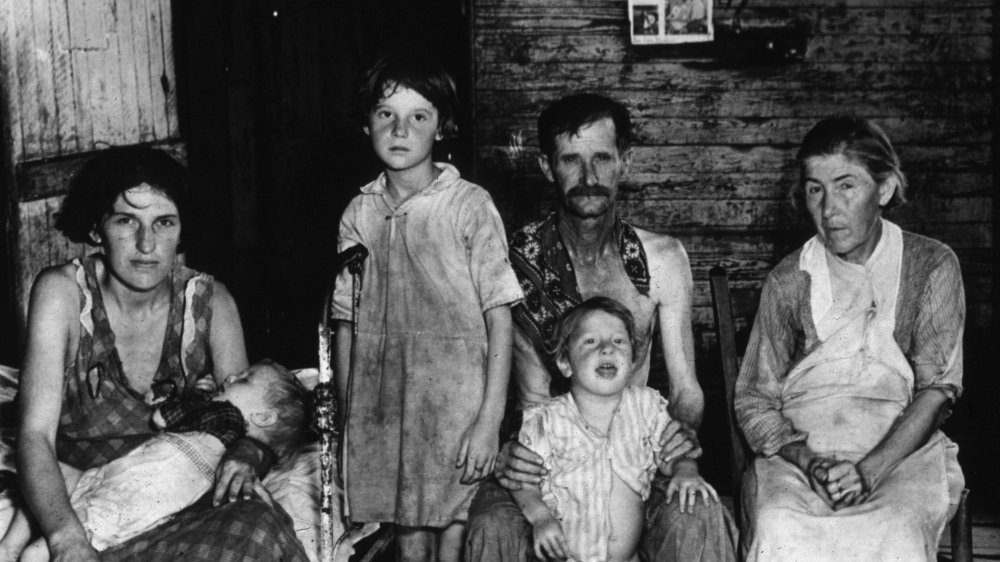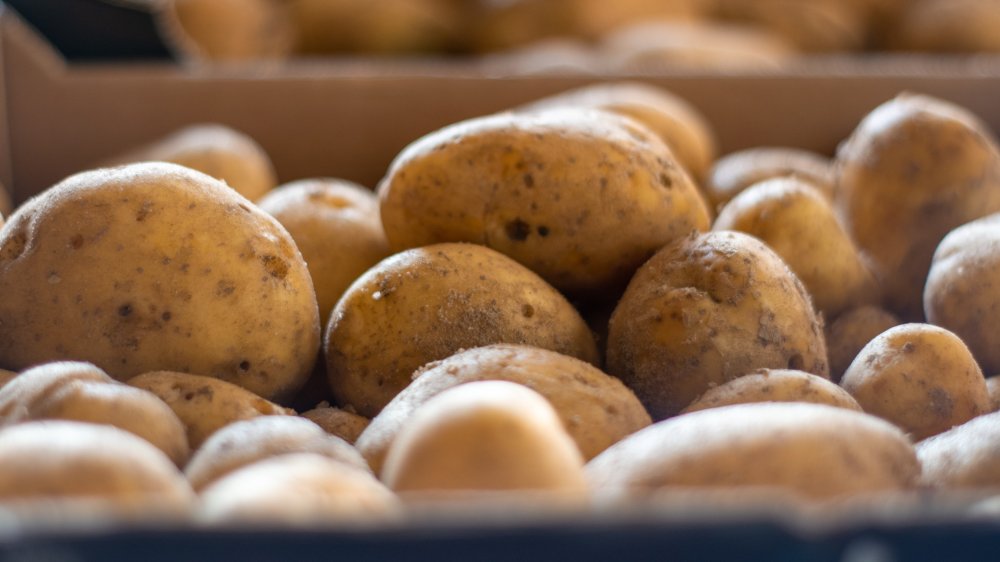Five Strange Meals People Ate During The Great Depression
Comfort foods. Bad day at work, bad evening at the relationship, lousy weather, personal disappointment ... and a pint of Ben and Jerry's will make it all better, or so goes the reasoning. Amazing as the product is, it's maybe not the best long-term coping strategy for hard feelings, especially depression — or, for that matter, Great Depression.
Because in the early 1930s, there was no Ben and Jerry's, but there was most certainly a Great Depression gripping the United States and refusing to let go. The stock market crashed in 1929, the Dust Bowl was destroying the nation's agriculture center, and hard times were very hard indeed. It wasn't a matter of finding something interesting or even fun to eat, but rather, a matter of trying not to starve, or fall prey to malnutrition. According to the Atlantic, the U.S. Government was slow to offer relief to the people. Herbert Hoover, a self-made tycoon, was president, and part of his background included efficiently organizing relief for the devastated nations of Europe after the catastrophe that was World War I, yet he refused to intervene when the Great Depression hit: "No one is actually starving," he proclaimed.
Except they were. And that fact (among others) cost him re-election. His successor, Franklin Roosevelt, came from money, but also knew that image was important. Meals at the White House were simplified. As the New Yorker notes, lunch was famously budgeted at 7.5 cents per person.
Potatoes were cheap, filling, and nutritious
Eleanor Roosevelt took up the cause of helping people stretch their meager resources to get maximum nutritional bang for their nickel, via the New Yorker. These budget-friendly recipes were serious dining back when when food and money were in frighteningly short supply. Potatoes were a staple, and according to Clara Cannucciari, an elderly woman who runs the YouTube channel "Great Depression Cooking," one popular dish was called the Poor Man's Meal, which consisted of potatoes combined with hot dogs (also cheap) and onions, chopped and fried up. Another Depression-era meal was "creamed chip beef," according to NavyHistory.org, which became infamous during the wars, served to troops who nicknamed it SOS: What these initials stood for varied, with one interpretation being "Save Our Stomachs." Butter, flour, and milk made the sauce, dried beef was mixed in, and the concoction was served over toast.
Hoover Stew was served in soup kitchens, and according to A Coalcracker in the Kitchen, it consisted of noodles, hot dogs (again), stewed tomatoes, and canned corn. More noodles were used as the basis for "spaghetti with carrots and white sauce," which according to culinary historian Andy Coe, meant noodles cooked until mushy, a basic white sauce and boiled carrots, baked into a casserole. Prune pudding, via the New York Times, combined sugar, cornstarch, cinnamon, and, yes, prunes. A little went a long way.
Would you eat these meals today? Maybe you just aren't hungry enough.

